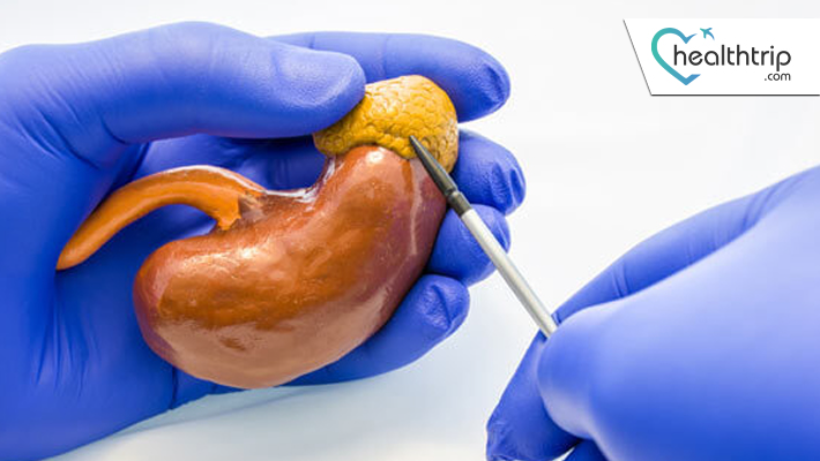
PET Scan for Adrenal Tumor: Diagnosis and Staging
17 May, 2023
 Obaidullah Junaid
Obaidullah JunaidAdrenal tumors are growths that develop in the adrenal glands. These glands are located on top of each kidney and are responsible for producing hormones that regulate a number of bodily functions, including blood pressure, metabolism, and the body's response to stress. While most adrenal tumors are benign, some can be cancerous and require prompt diagnosis and treatment.
A PET (positron emission tomography) scan is a powerful imaging tool that can be used to detect and stage adrenal tumors. In this article, we'll take a closer look at how PET scans work and how they can be used in the diagnosis and staging of adrenal tumors.
Transform Your Beauty, Boost Your Confidence
Find the right cosmetic procedure for your needs.

We specialize in a wide range of cosmetic procedures

How PET Scans Work
A PET scan uses a small amount of a radioactive substance, called a tracer, to visualize the body's internal organs and tissues. The tracer is injected into the patient's bloodstream and accumulates in areas of the body where there is high metabolic activity. Cancer cells, for example, tend to be more metabolically active than healthy cells and can therefore be detected more easily using PET imaging.
Once the tracer has been injected, the patient lies down on a table that slides into a large, donut-shaped machine. This machine contains detectors that can detect the radiation emitted by the tracer. As the patient lies still, the machine rotates around them, collecting data from different angles. This data is then processed by a computer to create detailed, 3D images of the body's internal structures.
PET scans can be used to detect a wide range of cancers, including those in the adrenal glands. They can also be used to stage cancers, which means determining the extent to which the cancer has spread beyond its original site.
Diagnosing Adrenal Tumors with PET Scans
Adrenal tumors can be difficult to diagnose because they often don't cause any symptoms. In some cases, they may be discovered incidentally during an imaging test for another condition. When a patient does present with symptoms, they can include high blood pressure, weight gain, and muscle weakness, among others.
Most popular procedures in India
Atrial septal defect
Upto 80% off
90% Rated
Satisfactory

Coronary Angiogram a
Upto 80% off
90% Rated
Satisfactory

Coronary Angiogram C
Upto 80% off
90% Rated
Satisfactory

Liver Transplant
Upto 80% off
90% Rated
Satisfactory

Total Hip Replacemen
Upto 80% off
90% Rated
Satisfactory

If a doctor suspects that a patient may have an adrenal tumor, they may order a PET scan to help confirm the diagnosis. During the scan, the tracer will accumulate in any areas of the body where there is high metabolic activity, including in any tumors that may be present in the adrenal glands.
Because PET imaging can detect even small amounts of cancerous tissue, it is highly sensitive and can be very effective in detecting adrenal tumors. In addition, PET scans can be used to differentiate between benign and malignant tumors. Benign tumors tend to have a lower metabolic activity and will therefore show up as less intense on the PET scan than malignant tumors.
Staging Adrenal Tumors with PET Scans
In addition to diagnosing adrenal tumors, PET scans can also be used to stage them. Staging refers to the process of determining how far a cancer has spread beyond its original site. This information is critical in determining the most appropriate course of treatment.
During a PET scan, the tracer will accumulate not only in the adrenal glands but also in any other areas of the body where there may be cancerous cells. This can include nearby lymph nodes or other organs, such as the liver or lungs.
By analyzing the patterns of tracer uptake on the PET scan, doctors can determine the stage of the cancer. For example, if the tracer accumulates only in the adrenal gland, the cancer may be in an early stage and may be treatable with surgery. If the tracer accumulates in nearby lymph nodes or other organs, however, the cancer may be more advanced and may require a more aggressive treatment approach, such as chemotherapy or radiation therapy.
Why is a PET scan used for adrenal tumors?
Adrenal tumors can be difficult to diagnose and stage using traditional imaging tests such as computed tomography (CT) or magnetic resonance imaging (MRI). These tests can show the size and location of the tumor, but they can't always determine whether the tumor is benign or malignant.
PET scans, on the other hand, can provide important information about the metabolism of the tumor cells. Because cancer cells tend to be more active than healthy cells, they absorb more glucose (a type of sugar) from the bloodstream. This increased glucose uptake can be detected by the radiotracer used in the PET scan.
By analyzing the distribution of the radiotracer in the body, doctors can determine whether the adrenal tumor is benign or malignant. They can also determine the stage of the tumor, which refers to how advanced it is and whether it has spread to other parts of the body.
PET scans can be particularly useful in detecting small tumors that may not be visible on other imaging tests. They can also help doctors monitor the effectiveness of treatment for adrenal tumors by showing changes in the metabolism of the tumor cells over time.
What are the risks of a PET scan?
PET scans are generally safe, but they do involve a small amount of radiation exposure. The amount of radiation used in a PET scan is similar to that used in other imaging tests such as CT scans, but because PET scans are more sensitive, they may require a higher dose of radiation.
The risk of radiation exposure from a PET scan is generally considered to be very low, and the benefits of the test often outweigh the risks. However, women who are pregnant or breastfeeding should avoid PET scans if possible, as radiation can be harmful to developing fetuses and infants.
Patients may also be allergic to the radiotracer used in the PET scan, although this is rare. Patients should inform their doctor if they have any allergies or previous adverse reactions to similar tests.
In addition, PET scans can produce false positive or false negative results. A false positive result occurs when the scan indicates the presence of cancer when there is none. This can lead to unnecessary tests and procedures. A false negative result occurs when the scan does not detect cancer that is present. This can delay diagnosis and treatment.
Conclusion
Adrenal tumors can be difficult to diagnose and stage using traditional imaging tests. PET scans offer a valuable tool for doctors to detect and monitor adrenal tumors by analyzing the metabolism of the tumor cells. By using a radiotracer that is absorbed by the tumor cells, doctors can determine whether the tumor is benign or malignant, and they can determine the stage of the tumor.
While PET scans do involve a small amount of radiation exposure, the benefits of the test often outweigh the risks. PET scans are generally safe and effective, but like all medical tests, they have some risks and limitations.
Wellness Treatment
Give yourself the time to relax
Lowest Prices Guaranteed!

Lowest Prices Guaranteed!




